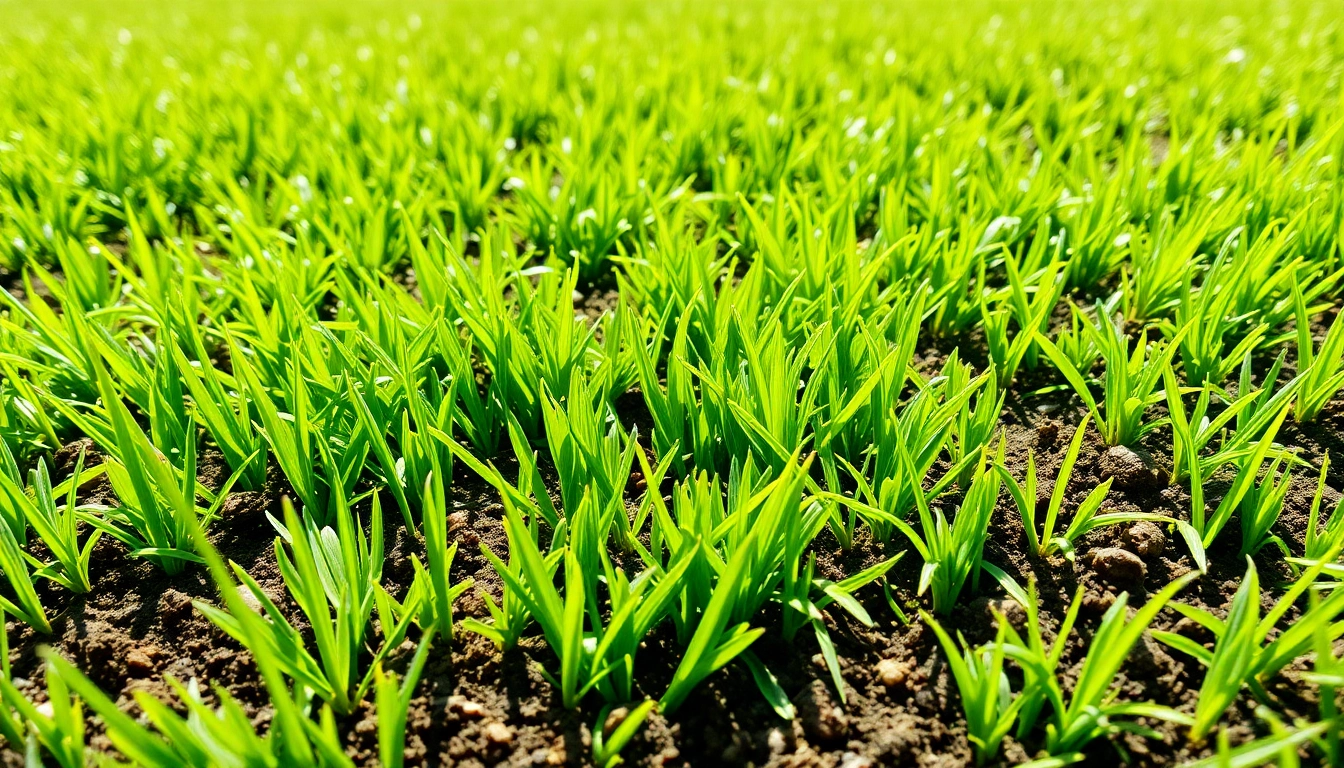Introduction to Over Seeding
Over seeding is a vital lawn care technique employed by homeowners and lawn care professionals to rejuvenate and enhance the appearance of existing grass. By introducing a new layer of seeds directly into the existing turf, over seeding provides numerous benefits, including improved density, color, and resilience against pests and diseases. This article delves into the ins and outs of over seeding, exploring its benefits, preparation steps, best practices, common challenges, and long-term maintenance techniques. Through in-depth analysis and actionable insights, we aim to equip you with the knowledge needed to achieve a stunning lawn through over seeding.
What is Over Seeding?
Over seeding is the process of spreading grass seed over an existing lawn without disturbing the soil significantly. Unlike traditional methods that involve tilling and reseeding, over seeding allows for the rejuvenation of the current grass by filling in bare spots and enhancing growth. This is particularly beneficial for lawns suffering from thinning, inconsistencies, or damage due to environmental stressors. Over seeding aims to introduce new varieties of grass that can better withstand local climatic conditions, diseases, and pests, resulting in a healthier lawn overall.
Benefits of Over Seeding
- Improved Lawn Density: Over seeding increases the number of grass plants per square foot, leading to a thicker lawn that can better resist weeds and other invaders.
- Enhanced Personal Aesthetic: A lush, green lawn is pleasing to the eye, and introducing new grass seed can drastically alter the lawn’s appearance, making it more visually appealing.
- Resistance Improvement: New grass seed varieties are often bred for increased resistance to pests, diseases, and drought, ultimately reducing maintenance needs.
- Soil Health Restoration: As new grass grows, it contributes organic matter to the soil, promoting microbial life and improving soil health over time.
- Cost-Effectiveness: Over seeding is often less expensive than total lawn replacement or sod installation. It can provide a significant transformation at a fraction of the cost.
When to Consider Over Seeding
The ideal timing for over seeding largely depends on your local climate and the type of grass you are utilizing. However, late summer and early fall are generally regarded as optimal times, as temperatures are conducive for seed germination and establishment. Additionally, the fall season provides adequate moisture, and soil temperatures remain warm enough to promote seed growth before winter dormancy. However, early spring can also be feasible, especially in cooler climates where you want to take advantage of spring rains.
Understanding the Over Seeding Process
Preparation Steps for Over Seeding
Before you begin the over seeding process, it’s crucial to prepare your lawn adequately. This ensures that the new seeds have the best chance for growth and establishment. Here are the steps to follow:
- Mow the Lawn: Begin by mowing your lawn shorter than usual. This reduces competition and allows better seed-to-soil contact.
- Rake the Lawn: Raking helps to break up existing turf, allowing seeds to settle into the soil more effectively.
- Address Weeds: If your lawn harbors weeds, consider using a selective herbicide or manually removing them to prevent competition for the new seeds.
- Apply Lawn Fertilizer: A starter fertilizer can provide the necessary nutrients to the new seeds as they begin to germinate.
Choosing the Right Grass Seed
Selecting the appropriate grass seed is crucial for the success of your over seeding efforts. Factors to consider include:
- Climate: Choose seed varieties that are well-adapted to your climate zone. For example, cool-season grasses work best in northern climates, while warm-season grasses are ideal for southern regions.
- Sun Exposure: Determine whether your lawn receives full sun, partial shade, or full shade, and select a seed that caters to these conditions.
- Purpose: Decide on the intended use of your lawn—whether for aesthetics, recreational purposes, or a hardy turf that requires minimal maintenance—and select grass accordingly.
Tools Needed for Effective Over Seeding
To ensure a smooth over seeding process, you will need a few essential tools:
- Lawn Mower: For mowing the grass to an appropriate height.
- Rake: To prepare the soil and incorporate seeds into the turf.
- Seed Spreader: A seed spreader (broadcast spreader or drop spreader) will help evenly distribute the seeds across your lawn.
- Fertilizer Spreader: For applying lawn fertilizer evenly after seeding.
- Watering Equipment: A garden hose or irrigation system to keep the newly seeded areas moist until establishment.
Best Practices for Successful Over Seeding
Optimal Timing for Seeder Application
The time you choose to over seed can greatly influence the success of the project. As mentioned, late summer to early fall is generally optimal, particularly for cool-season grasses. The key is to wait until the existing grass starts to slow down in growth. This typically occurs in late August to early September, giving the new grass seed the best chance to germinate and establish before winter.
Watering Techniques Post-Seeding
Water management following over seeding is critical to success. Initially, the freshly planted seeds require consistent moisture, so adopt these techniques:
- Frequent Light Watering: Water the area lightly several times a day for the first 2-3 weeks, ensuring that the soil remains consistently moist but not soggy.
- Gradual Reduction: After seeds have germinated, gradually reduce the frequency of watering while increasing the duration to encourage deeper root growth.
- Consider Time of Day: Watering early in the morning minimizes evaporation and reduces stress on the grass.
Fertilization After Over Seeding
Proper fertilization following your over seeding efforts boosts growth and sustains your lawn health. Here’s how:
- Use a Starter Fertilizer: Apply a slow-release starter fertilizer high in phosphorus to support early root development.
- Observe Application Rate: Ensure you follow the recommended application rates to avoid burning the new seedlings.
- Fertilizer Timing: Fertilize right after the over seeding process for the best results.
Common Challenges and Solutions
Dealing with Weeds After Over Seeding
Weeds can pose a significant threat to your over seeding efforts. Preventative measures and timely actions can help:
- Pre-Emergent Herbicides: Avoid using pre-emergent herbicides during the over seeding process, as they can prevent seeds from germinating.
- Hand-Weeding: Manually removing weeds helps avoid damaging the new grass and prevents competition.
- Selective Herbicides: Apply selective post-emergent herbicides only when the new grass is established and has reached the recommended height, typically about 3 inches.
Addressing Seed Germination Issues
Sometimes seeds do not germinate as expected. Solutions to common germination challenges include:
- Ensuring Adequate Seed-To-Soil Contact: Seeds that are not in contact with soil will struggle to germinate. Raking and rolling post-seeding can ensure good seed placement.
- Regular Monitoring: Keep an eye on soil moisture levels and adjust your watering schedule based on weather conditions.
- Choosing Quality Seed: Invest in high-quality seeds from reputable suppliers to avoid germination issues associated with poor-quality seeds.
Restoring Thinning Lawns Effectively
If your lawn is visibly thinning, the over seeding technique can help restore it effectively. Consider the following:
- Assess Lawn Conditions: Take notes on areas that require more attention, such as compacted soils or areas in the shade where grass struggles to grow.
- Create a Targeted Plan: Focus on over seeding during peak growing seasons for the affected areas.
- Monitor Progress: Track the growth of new seedlings to ensure they are taking hold and adjust your care regimen accordingly.
Long-term Lawn Care After Over Seeding
Maintenance Tips for a Thriving Lawn
Once the over seeding process is complete, long-term care incorporates several key practices:
- Regular Mowing: Maintain a mowing schedule that encourages healthy lawn growth, avoiding cutting more than one-third of the grass height at a time.
- Consistent Watering: Adapt your watering schedule based on the season while paying attention to drought stress signals.
- Seasonal Fertilization: Establish a fertilization schedule using a balanced fertilizer that meets both the new and existing grass needs throughout the year.
Monitoring Lawn Health Post-Over Seeding
Stay vigilant in monitoring your lawn after over seeding to catch potential issues early:
- Inspect for Weeds: Regularly check for emerging weeds and address them promptly.
- Evaluate Soil Health: Testing your soil every couple of years can provide insights into nutrient levels and overall lawn health.
- Watch for Pests: Be on the lookout for common lawn pests and take appropriate action if necessary.
Integrating Over Seeding with Other Lawn Care Practices
For a comprehensive lawn care program, consider integrating over seeding with other practices:
- Aeration: Aerating before or after over seeding can significantly improve seed-to-soil contact.
- Topdressing: Applying a thin layer of compost or soil mix post-over seeding can improve nutrients and moisture retention.
- Soil Testing and Amendment: Regular soil testing can identify deficiencies and inform your fertilization practices, ensuring a thriving lawn ecosystem.



